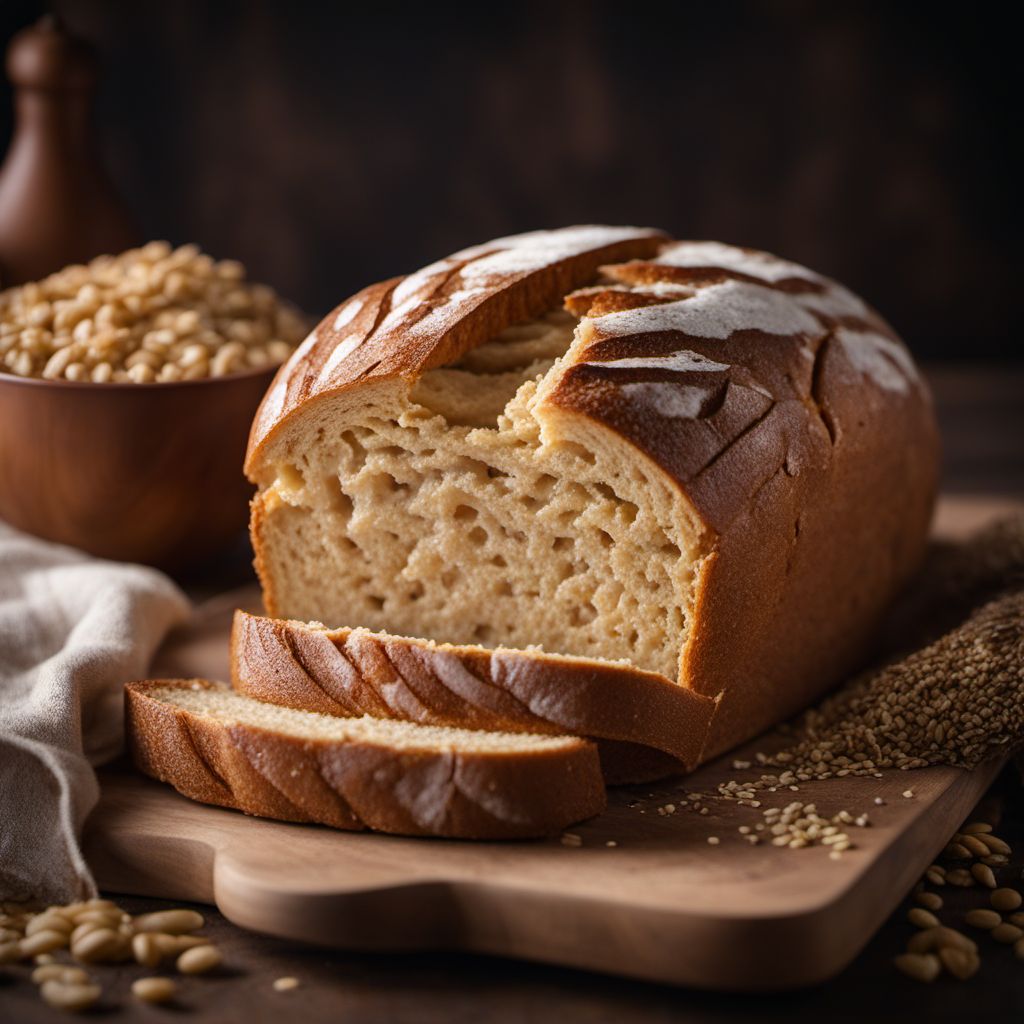
Ingredient
Gluten free bread, brown
The Wholesome Delight: Discovering the Goodness of Brown Gluten-Free Bread
Brown gluten-free bread is made from a combination of gluten-free flours, such as brown rice flour, sorghum flour, and tapioca flour. It has a dense and chewy texture with a slightly nutty flavor. This bread is packed with fiber, vitamins, and minerals, making it a nutritious choice for those with gluten sensitivities or dietary restrictions.
Origins and history
Gluten-free bread has gained popularity in recent years due to the increasing awareness of gluten sensitivities and celiac disease. Brown gluten-free bread, in particular, offers a healthier alternative to traditional white bread, as it retains the nutrient-rich bran and germ of the grains. It can be traced back to the rise of gluten-free diets and the demand for more diverse and inclusive food options.
Nutritional information
Brown gluten-free bread is a good source of fiber, vitamins, and minerals. It is lower in calories and carbohydrates compared to traditional bread, making it a suitable choice for individuals looking to manage their weight or blood sugar levels. Additionally, it is free from gluten, making it safe for those with gluten sensitivities or celiac disease.
Allergens
Brown gluten-free bread is free from gluten and does not contain any known allergens. However, it is important to check the label for any potential cross-contamination with allergens during the manufacturing process.
How to select
When selecting brown gluten-free bread, look for loaves that are firm and well-shaped, with a golden brown crust. Avoid bread that feels overly soft or has a gummy texture. Additionally, check the ingredient list to ensure it is free from gluten and other potential allergens.
Storage recommendations
To maintain the freshness and quality of brown gluten-free bread, store it in a cool, dry place, away from direct sunlight. It is best to consume it within a few days of purchase or freeze it for longer storage. When freezing, slice the bread and wrap individual portions tightly in plastic wrap or place them in airtight freezer bags.
How to produce
Producing brown gluten-free bread at home requires a combination of gluten-free flours, such as brown rice flour, sorghum flour, and tapioca flour. There are numerous recipes available online that provide step-by-step instructions for making homemade gluten-free bread. However, it may require some experimentation to achieve the desired texture and flavor.
Preparation tips
Brown gluten-free bread can be enjoyed as a sandwich bread, toasted for breakfast, or used as a base for bruschetta or crostini. It can also be used to make breadcrumbs or croutons for added texture in salads or soups. Experiment with different spreads, fillings, and toppings to create a variety of delicious and satisfying meals.
Substitutions
There are various gluten-free bread options available in the market, including white gluten-free bread, multigrain gluten-free bread, and seeded gluten-free bread. These can be used as substitutes for brown gluten-free bread, depending on personal preference and dietary needs.
Culinary uses
Brown gluten-free bread is commonly used as a substitute for traditional bread in sandwiches, toast, and other baked goods. It is a popular choice among individuals following a gluten-free diet or those with gluten sensitivities or celiac disease.
Availability
Brown gluten-free bread is widely available in health food stores, specialty grocery stores, and some mainstream supermarkets. It can also be purchased online from various retailers. The availability may vary depending on the region and demand for gluten-free products.
